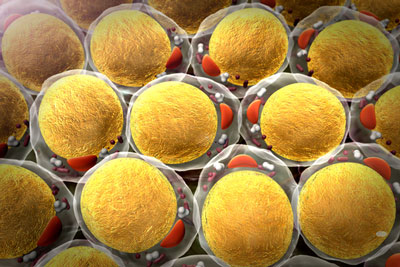Rapamycin reduces body fat and appetite in older rats
Posted: 16 June 2015 | Victoria White
Rapamycin, a pharmaceutical used to coat coronary stents and prevent transplant rejection, reduces obesity and preserves lean body mass when given to rats…


A group of University of Florida researchers has discovered that an existing drug reduces body fat and appetite in older rats, which has intriguing implications for aging humans.
Rapamycin, a pharmaceutical used to coat coronary stents and A, reduces obesity and preserves lean body mass when given intermittently to older rats. While the current findings are limited to rats, rapamycin has potential as a treatment for age-related obesity because it is already used to treat other conditions in people.
“We need to be able to intervene with treatments for older adults. They’re going to have health care issues, and not everyone can get up and exercise. So if you can give them a jump-start or combine rapamycin with other therapies, you could have better health outcomes,” said Christy S. Carter, Ph.D., an assistant professor in the department of aging and geriatric research in the UF College of Medicine and co-lead author of one of the studies.
Rapamycin selectively targeted fat, allowing retention of lean mass
Using 25-month-old rats, which are about equivalent to 65-year-old people, researchers found that body weight dropped by approximately 13% after the rats were treated with rapamycin. The drug targets how the body makes leptin, a hormone produced by fat cells that affects hunger and metabolism. The researchers hypothesise that the reduction in eating is due to normalising the typical age-related spike in leptin.
Rapamycin’s ability to stabilise the rats’ leptin level made them lighter, researchers found. Overall, there was a dramatic body metamorphosis: rapamycin selectively targeted the fat, allowing the animals to retain lean mass. It worked so well that the older rats ultimately developed a lean-to-fat ratio similar to that of their younger counterparts, researchers found.
“In this case, we feel like we restored the body composition to that of a young animal,” Carter said.
Rapamycin works by inhibiting a signalling mechanism known as mTORC1
In another study, researchers found that small, intermittent amounts of rapamycin produced the desired slimming effect in both young and old rats. While rapamycin works best in older, obese rats, researchers were encouraged that it also had an effect on certain younger animals.
“One point that is common is that it seems to work better in animals, old or young, that have more fat,” said co-lead author of the second study, Philip J. Scarpace, Ph.D., a professor in the department of pharmacology.
Getting the correct dose was crucial: Too little of the drug did not reduce obesity, but too much of it causes elevated glucose and fat levels in the blood.
Carter hit the sweet spot in the rats, picking just the right intermittent dose of rapamycin to deliver all of the benefits and none of the unwanted side effects, Scarpace said. The second paper determined that the drug works by inhibiting a signalling mechanism known as mTORC1, a protein complex that is an energy and nutrient sensor. This triggers a response in the brain that curbs eating, effectively reducing age-related fat until the older animals resemble much younger ones.
Researchers remain unsure whether rapamycin is working in the brain or another part of the body
While rapamycin has yet to be tested in people, the rats were chosen carefully to resemble the aging and obesity pattern of humans, Carter said.
“We’re looking at similarities in longevity, changing body composition and declining physical function — and we’re looking at the same trajectory of age-related obesity,” she said.
Researchers remain unsure whether rapamycin is working in the brain or another part of the body. Next, Carter said she would like to study whether factors released by muscles play a role in fat metabolism.
The two rapamycin-related studies were published recently in the Journals of Gerontology.
Related conditions
Obesity
Related organisations
Florida University



